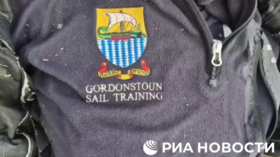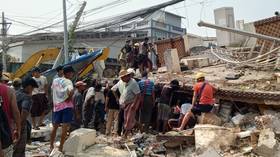What the new arms race will look like in a post-INF world

Washington ending the INF arms control treaty has raised fears of a new “arms race.” This time it will be about more than just missiles, with China presenting strong competition to the US and Russia, a military expert tells RT.
Last week’s test of a ground-launched Tomahawk cruise missile showed that the US is eager to field a system banned by the Intermediate-Range Nuclear Forces Treaty, even as it accused Russia – without offering evidence – of being in violation as a pretext to rip up the 1987 pact.
Russian President Vladimir Putin has ordered a “symmetrical response” to this threat, citing the presence of US launchers in Poland and Romania. Meanwhile, the Russian delegation to the UN has warned that the US actions have brought the world “just one step away from an uncontrolled arms race.”
Also on rt.com Putin orders ‘symmetrical’ response to US missile test, says Washington worked to breach INFUnlike the Cold War contest, however, the race to develop revolutionary military technology will have multiple contestants, retired Aerospace Force Colonel Mikhail Khodarenok told RT.
He sees three possible vectors of development for new technology, all of which go beyond intermediate-range missiles: artificial intelligence (AI), space, and hypersonic weapons.
AI would be the biggest step in military advancement since gunpowder and atomic weapons, Khodarenok says, and hundreds of thousands of scientists in the US and China are already working on it.
Whoever masters its use first will be the master of the world.
“The militarization of space is inevitable,” Khodarenok adds. Treaties currently prohibit the deployment of weapons in space, but this is unlikely to remain true for long, as the US has already moved to create a space force.
Whoever can field a maneuverable “space plane” will dominate that sphere, Khodarenok argues, noting that satellites and other space assets are crucial for intelligence, navigation, communications and early-attack warnings.
Also on rt.com From hypersonic glider to nuke subs: Meet Russian arms on brink of deployment (PHOTO, VIDEO)There is no engine – yet – that could make such a plane a reality, but whoever successfully designs one will be ahead of the competition, the colonel noted.
The same technology could provide the edge in developing hypersonic airplanes and missiles, but also solutions that could enable drones and other robot vehicles to stay airborne for weeks or longer.
China is currently pouring massive resources into research and development, while the US has drastically increased its military budgets in order to rebuild a force President Donald Trump claimed was “depleted” from decades of constant warfare. Russia’s military budget is quite modest in comparison, though its weapons systems appear on par or even more effective than their US counterparts, at a fraction of the cost.
Numerous US military experts have also cautioned that no amount of money and technology can make up for problems with the Pentagon’s doctrine and strategy that will not work against new Russian and Chinese strategies.
Subscribe to RT newsletter to get stories the mainstream media won’t tell you.















